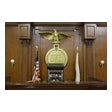
Dental spending in the U.S. did not see an upward trend in 2012, and at $111 billion it remained roughly the same as the previous year, continuing a trend that began in 2008, according to a new ADA report.
The report data cover three full years of the period since the Great Recession and suggest very strongly that the dental economy is not rebounding, the authors noted.
The report used newly released data from the U.S. Centers for Medicare and Medicaid Services (CMS) and the Medical Expenditure Panel Survey to examine national dental expenditure patterns through 2012. They analyzed expenditure in nominal dollars, inflation adjusted dollars, and per-capita inflation adjusted dollars.
These numbers cannot be blamed entirely on the recent economic downturn, as the dental economy began to slow down well before that, the authors noted.
They found that while per-capita expenditure was growing at 3.9% per year between 1990 and 2002, it declined dramatically to 1.8% per year for 2002-2008, and since 2008 it has declined, albeit at a very slow rate.
The trends in dental spending are not likely to change anytime soon, according to co-author Marko Vujicic, PhD.
"We are not predicting a major rebound if current trends continue," he told DrBicuspid.com.
He pointed to a 2013 ADA report, based on the Health Policy Resources Center's analysis of the key factors shaping the dental landscape, that found that organized dentistry has arrived at a critical moment and cannot afford to be complacent.
The authors of this latest report note that structural changes are occurring in the dental economy, and the slowdown is not simply a cyclical effect.
So what are some possible reasons for this slowdown?
"There are many, but a major one is the decline in dental care utilization among working-age adults," Vujicic said. "This trend is unrelated to the recent economic downturn."
Other factors include improvements in oral health among most segments of the population, decline in individuals with private dental benefits, erosion of adult dental benefits by state Medicaid programs, and fee reductions among private insurers.
Another key trend noted in the report was that, while dental care financing still remains overwhelmingly private, there has been an increase in dental expenditure finances from public sources.
"When you look over time, there has been an increase in the prominence of CMS programs," Vujicic said. "Basically, 10 years ago about 4% of dental spending was from CMS programs, and today it is 8%."
Apart from the broader picture, the authors also took per-patient dental expenditure into account. They looked at children up to 20 years of age, working-age adults 21 to 64, and elderly adults age 65 and older.
In 2011, average per-patient dental expenditure among adults 21 to 64 was $649, while it was $767 among the group older than age 64. While both groups saw a decline in spending over a three-year period starting in 2008, the level of per-patient dental expenditure was highest among the elderly in 2011, and the difference between the two groups was statistically significant.
"Recent projections of dental spending through 2040 suggest that while the aging of the population may act to increase total dental expenditure, downwards trends in dental spending among younger age groups may counteract this effect," the authors wrote.
In the near future, dental spending will continue to remain sluggish, and dentists are likely to face a challenging economic environment, noted the authors, adding that the U.S. healthcare system is entering a period of significant reform and change.
Vujicic noted that the 2013 ADA report outlined some of these changes, which include an aging and more diverse population, a changing healthcare delivery system with the implementation of the Patient Protection and Affordable Care Act, shifting consumer habits with Americans increasingly relying on technology and seeking greater value from their spending, the nature of oral disease, and financing of dental care.
"The ADA's Health Policy Resources Center will continue to monitor these and other critical developments in the dental care system through this period of transition," the authors concluded.


.hpp4JFpXkV.png?crop=focalpoint&fit=crop&fp-x=0.5&fp-y=0.5&h=100&w=100&auto=format%2Ccompress&q=70)




.hpp4JFpXkV.png?crop=focalpoint&fit=crop&fp-x=0.5&fp-y=0.5&h=167&w=250&auto=format%2Ccompress&q=70)











